- Register
- Log in to Tune-In
- Wishlist (0)
-
Shopping cart
(0)
You have no items in your shopping cart.
Beatles News

If you spot Sir Paul McCartney out and about, don't ask him for an autograph or selfie – the superstar says he's always found them "strange" and would prefer a chat instead.
The Beatles musician has told Reader's Digest he doesn't plan on signing any more autographs for fans or posing for bad-quality photos because he'd rather have a deeper interaction.
He said: "It always struck me as a bit strange – 'here, can I write your name down on the back of this till receipt please?' Why? We both know who I am."
Fans are often keen to pose for selfies with Sir Paul, 79, to keep a memento of having met one of music's biggest stars, but he explained why he wasn't keen on phone photographers either.
Source: Katie Archer/yahoo.com
details

When George Harrison was in The Beatles, he didn’t get many chances to contribute his own songs. So he stockpiled his tunes and kept them at the ready, waiting for the day he left the band. In 1970, he entered the studio with tons of songs to choose from for his debut solo album, All Things Must Pass. Along with “My Sweet Lord,” there was another heavily religious song on the album, and it has an interesting back story.
In Martin Scorsese’s documentary, George Harrison: Living in the Material World, George says he was brushing his teeth when suddenly this melody came to him.
“I was cleaning my teeth… and suddenly in my head came this ‘You don’t need a dum dada-pmm pa-pmm-pa, you don’t need a bmm papa-bmm.’ All I had to do was pick up the guitar, find what key it was in, and fill in the missing words,” George said about the song, which would later become “Awaiting On You All.”
Source: cheatsheet.com
details
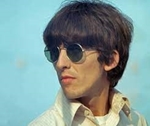
George Harrison was not a fan of authority. In an interview with the Evening Standard in 1966, the Beatle shared his thoughts on such subjects as the war in Vietnam and religion. There was a common thread in the topics he spoke to: the people in power don’t practice what they preach.
Harrison told writer Maureen Cleave that he thought about the war in Vietnam every day and he thought it was wrong.
“Anything to do with war is wrong,” he said, as recorded in the book George Harrison on George Harrison.
Source: cheatsheet.com
details
A signed John Lennon drawing created by the late musician during a 1969 visit to Scotland is coming up for auction in Lichfield.
Autographed ‘To Derek Peace + Love John Lennon 1969’, the framed picture is a sketch of the former Beatles member and Yoko Ono in the musician’s caricature style.
Derek was the uncle of owner Frank Massie, who inherited the work from his late father after it had been passed on to him.
The work will go under the hammer at Richard Winterton Auctioneers on 1st November.
Source: lichfieldlive.co.uk
details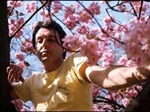
In the foreword to The Lyrics: 1956 to The Present, Paul McCartney says that he’s repeatedly been asked to write his memoirs “but the time has never been right.” As he looked back across his life, though he did not have a diary to refer to, “what I do have is my songs—hundreds of them—which serve much the same purpose.” In 2015, he began meeting with poet Paul Muldoon and going through his recollections about his compositions with the Beatles and as a solo artist. The results are the 154 selections included in this two-volume collection. Here, a look at McCartney’s discussion of 10 of those songs—and a distilled view into his life and creative process.
Source: Alan Light/wsj.com
details
Every Beatles fan has heard about the upcoming documentary The Beatles: Get Back by now. Directed by Peter Jackson, famous for his work on Lord of the Rings, this project is said to be one of the best films about the band. It shows footage from the recording sessions of their iconic album Let it Be in a way no one has ever seen before, and will come out on Disney + at the end of November 2021.
Fans can be sensitive about things like this, especially considering how many myths have surrounded this legendary band, so to put their minds at ease and to calm the impatience, let's see what the director and the Beatles themselves have said about this documentary.
Source: Val Barone/thethings.com
details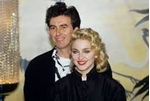
Who knew that the singers of “Material Girl” and “Living in the Material World” would work on a film together? Just by listening to those two songs, you can understand how different George Harrison and Madonna are. Yet both pop stars were able to have a pretty great working relationship on the film Shanghai Surprise. However, some would say they worked a little too well with one another. In 1986, then-newlyweds Sean Penn and Madonna were cast as love interests, Glendon Wasey and Gloria Tatlock, in Shanghai Surprise. Set in 1938, Shanghai Surprise follows a failed glow-in-the-dark necktie salesman (Penn) as he helps a missionary nurse (Madonna) obtain opium to ease her patient’s pain.
Source: cheatsheet.com
details
Of all the revelations on the Beatles’ new Let It Be box set, the biggest is the song that didn’t even make the original album. “Don’t Let Me Down” is John Lennon’s raw love ballad to Yoko Ono, much like “Two of Us,” Paul McCartney’s song for Linda. John sounds terrified of the emotional leaps he’s taking, but he leans on the other Beatles to back him up and carry him through the song. You can hear the band develop “Don’t Let Me Down” over the course of the box, until it comes to feel like the whole Beatles story in one song: a map to the long and winding road of their messy, doomed, inescapable friendship.
Source: Rob Sheffield/yahoo.com
details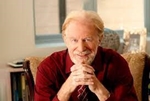
Actor and activist Ed Begley, Jr. joined host Kenneth Womack to talk about his decades-long career, Beatles stories, extensive environmental work and more on the Season 3 premiere of "Everything Fab Four," a podcast co-produced by me and Womack (a music scholar who also writes about pop music for Salon) and distributed by Salon.
Begley, known for his roles in many popular TV shows and movies, including "St. Elsewhere," "This Is Spinal Tap" and "Better Call Saul," says he first became aware of the Beatles as a boarding school student in 1963. And as a drummer in the marching band (and later a garage rock band), he became "obsessed" with being like Ringo and insisted on getting Ludwig drums.
Source: salon.com
details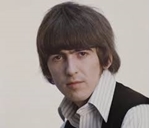
George Harrison had some fascinating views of the world. After only being a Beatle for a short time, George knew he wasn’t cut out for it. Sure, he made some great memories, but he didn’t truly enjoy any aspect of being in The Beatles or fame. George didn’t like people wanting a piece of him or expecting things from him. Sometimes even making new music was a hassle because he had to deal with the materialistic music industry and its rules.
So it’s truly no surprise that George despised Beatlefests. He thought they sold fans, who either couldn’t let go of The Beatles or the fact that they split, false stories just to make a buck.
Source: cheatsheet.com
details
Later this year the newest film based on the story of The Beatles is due for release. Midas Man takes a different angle on the Fab Four’s story, however, as it focuses solely on Brian Epstein, the band’s manager.
This week the film received its first look at Brian actor Jacob Fortune-Lloyd in costume.
Earlier this year in April Jacob was announced to be taking on the role of the iconic man behind the scenes.
The star is best known for playing Townes in the Netflix hit The Queen’s Gambit.
Jacob’s first shot as Brian, which can be seen below, shows him in the dapper attire the Beatles’ leader was known for.
Source: Tammy Waldman/asumetech.com
details
There have been a number of people dubbed the “fifth Beatle”.
John Lennon, Paul McCartney, George Harrison and Ringo Starr may have been the Fab Four, but the music media loved to add one more to their famous line-up.
The list includes those intrinsic to the success of The Beatles, including manager Bruce Epstein and producer George Martin.
Musicians such as drummer Pete Best, bassist Stuart Sutcliffe and keyboardist Billy Preston, who all played in the band at some point, were also given the mantle.
But there is one name that makes conspiracy theorists prick up their ears, and the majority of Beatles fans shake their heads in disbelief.
And that name is Billy Shears.
To believers, not only was Billy Shears the fifth Beatle, he was a lookalike who had replaced one of the band’s members without the world’s knowledge.
Source: Ross McGuinness/au.news.yahoo.com
details
The controversy that surrounds the album Let It Be down the years makes it the most intriguing release by The Beatles. Many observers consider it ill-conceived, a slapdash affair and a sad ending to a great legacy. It is doubtful any band (of any longevity) had as much influence as The Beatles in their seven-year recording career. McCartney still peppers his live setlist with the title track. Some call it a very weak album, but with three No. 1 singles, it certainly warrants the current attention.
Source: Brad Auerbach/spin.com
details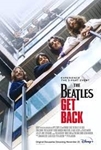
The first official trailer dropped Wednesday for Peter Jackson’s The Beatles: Get Back, which chronicles the band’s creative process as they attempt to write 14 new songs in preparation for their first live concert in over two years. It would also be the band’s final live performance.
While Jackson previously released a sneak peek at his upcoming six-hour Disney+ series, that footage was mostly a montage of moments, rather than a trailer or clip.
Today’s footage shows the Beatles at work on the new songs and imagining a concept for the concert, which became an iconic moment in music history. Faced with a nearly impossible deadline, there is disagreement and doubt among the band’s members as they compose some of the world’s most iconic songs.
Source: G. H. HARDING/t2conline.com
details
We use your sign-up to provide content in ways you've consented to and to improve our understanding of you. This may include adverts from us and 3rd parties based on our understanding. You can unsubscribe at any time. More info
Sir Paul McCartney has said that he's never written a memoir because they are for people who are old and retiring. The Beatles legend made his comments during a chat with Radio 4 presenter John Wilson.
The singer is showing no signs of slowing down as he approaches his 80th birthday and has a string of upcoming projects on the horizon.
As well as recording an episode for John's show This Cultural Life, in which he looks back at the music that shaped his life, he recently released a book.
Source: Andrea Tonks/express.co.uk
details